I Welcomed My Best Friend Into My Home—She Destroyed My Family

It’s dark and incredibly cold. There’s no oxygen. There’s no water. There’s no life. But the James Webb Space Telescope doesn’t seem bothered by all this. Its main goal is to find the very first galaxies that formed billions of years ago in the early Universe and observe the stars making up distant planetary systems. Its mission is to... but wait! What is THAT?!
The James Webb Space Telescope has discovered something absolutely amazing — a star-planet hybrid with very strange clouds! This bizarre world, called VHS 1256 b, is actually a brown dwarf. Those are bigger than planets but too small to classify as stars. They emit some light of their own and are quite hot. But their mass is simply not enough to fuse hydrogen into helium — like full-fledged stars do.
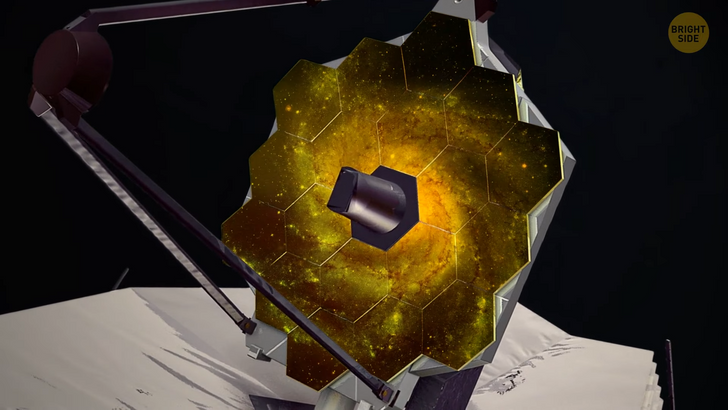
Space bodies of this kind aren’t actually brown. They occur in a wide variety of colors, but those are mostly invisible to the human eye. What we CAN see is the light they emit — and to us, it appears to be dark orange or magenta. The brown dwarf we’re talking about is almost 20 times the size of Jupiter.
It orbits 2 red dwarf stars, and to complete one orbit, the brown dwarf needs 17,000 years! In fact, astronomers found out about this unusual exoplanet in 2016. But at that time, they didn’t classify it as a brown dwarf — and, thus, couldn’t explain its puzzling reddish glow. Now, thanks to the James Webb Telescope, they know the space object’s origin.
Anyway, back to those clouds. As you know, clouds on Earth are made of water vapor. But those on the brown dwarf are different. They seem to be made of... sand. It looks like good old sand from Earth — but it’s actually not. The clouds are made of tiny particles of silicate.
Scientists have been putting forward theories about the existence of such sand clouds on exoplanets for quite some time. But the discovery the James Webb Space Telescope made is the first real proof. The silicate particles on the “sandy dwarf” are most likely quartz or some other mineral. In size, they’re less than a micron — and one micron is 1/25 of a thousandth of an inch. In other words, they look like particles in smog.
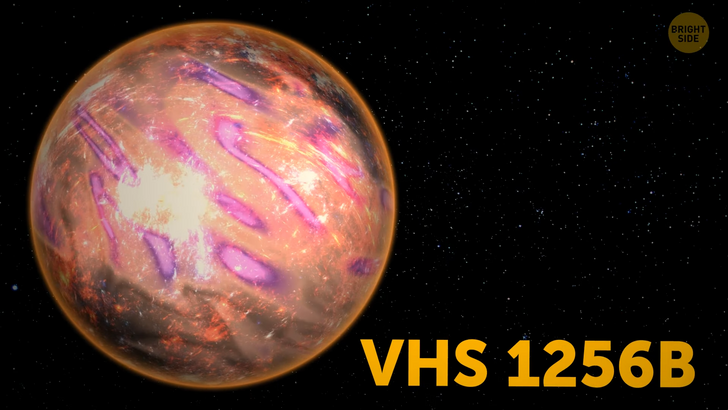
The exoplanet seems to have an atmosphere which contains some water, methane, and other substances and minerals. Interestingly, this atmosphere isn’t still. It’s constantly undergoing extreme changes. Another cool thing about it — scientists have detected carbon dioxide. And this is only the second confirmed discovery of this gas on a planet outside of the Solar System.
By the way, the James Webb Space Telescope, with the help of which astronomers discovered our “sandy” brown dwarf, is an absolutely stunning piece of equipment — around 100 times more powerful than Hubble! Even though the telescope itself is 3 stories high, and its size equals that of a tennis court, its mirrors are the lightest large telescope mirrors of all time. When all the 18 mirrors of the telescope were completed during the manufacturing process, their mass was reduced by 92% in comparison to the initial discs — each mirror weighed a mere 44 lbs!
The telescope’s mirrors seem to be gold. But in reality, they’re made of beryllium — a steel-gray, lightweight, and brittle metal. There’s indeed a gold coating on each mirror. But they can’t be produced entirely out of gold since this material tends to expand and contract even with small temperature changes. That’s why the total amount of gold in the James Webb Space Telescope is less than 2 ounces.
James Webb’s “telescope side” is cooling itself down, and its temperature doesn’t rise higher than −370˚F. That’s cool enough to make nitrogen liquid. A truly enormous five-layered sunshield stretches around the telescope and reflects away as much sunlight as possible, letting the telescope stay cool.
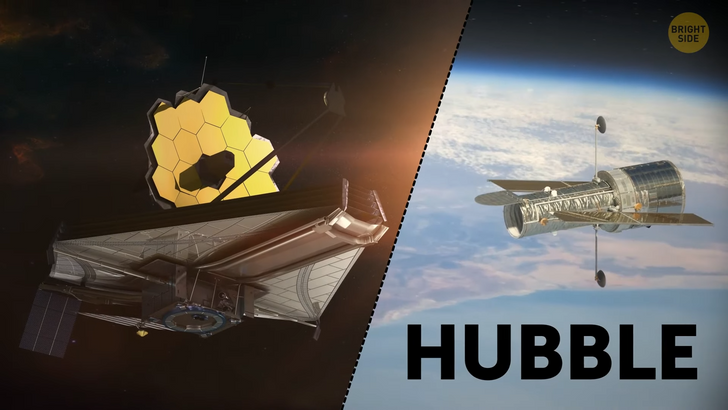
The telescope was launched near the equator because Earth spins a bit faster there. And this gave the rocket some extra push. The telescope orbits the Sun more than 1 million miles away from Earth. And when it runs out of fuel, it’ll keep orbiting the Sun indefinitely. On the other hand, even though the telescope wasn’t actually designed to be serviced or upgraded, it might potentially be refueled with the help of robots. This would extend its life.
Anyway, if you think that our newly-found brown dwarf is the only bizarre exoplanet out there, let me show you some other breathtaking worlds! There is an exoplanet that is really something else — just look at its awesome magenta color! You can find it in the Virgo constellation. The planet is called Gliese 504 b. It orbits very far from its parent star — nine times the distance between the Sun and Jupiter! The planet formed relatively recently and is still glowing with heat — that’s why its surface looks pinkish.
One of the oldest exoplanets we know about [PSR B1620-26 b] is about 12.7 billion years old. It’s almost three times as old as Earth! This also means that the so-called “Genesis Planet” formed only about 1 billion years after the Big Bang. The planet is so old that its two parent stars have had enough time to evolve into a white dwarf and a pulsar making almost 100 revolutions per second. I bet sunrises on this planet must look awesome!
Just 20 light-years away from the Sun (which isn’t such a great distance when we talk about space), a bizarre rogue planet is roaming the Milky Way galaxy. But even though this planet doesn’t orbit any star, it still has an incredibly powerful magnetic field. It’s 4 million times stronger than Earth’s! The exoplanet [SIMP J01365663+0933473] also produces amazing auroras. That’s why when it was discovered in 2016, astronomers were almost sure they had detected a brown dwarf.
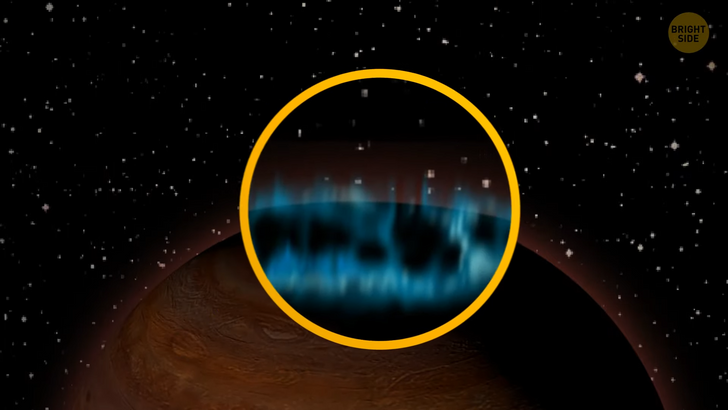
But later, scientists got some proof that this space object wasn’t big enough to be a brown dwarf. The planet sure is a mammoth among its peers. It’s 1.2 times as wide as the largest planet in the Solar System, Jupiter, and more than 12 times as heavy. Astronomers think the exceptionally strong magnetic field helps the planet produce auroras. But the most curious thing is that they’re generated in a different way than auroras on Earth. It might be because the exoplanet’s moon helps the planet create mesmerizing light shows.
The next exoplanet isn’t like any other. It’s often called “Super Saturn” or “Saturn on steroids.” That’s because J1407b has a colossal system of rings. They’re 640 times as large as those Saturn has. This bizarre world is the only planet we know about that has rings similar to Saturn’s. If you moved this giant to our Solar System and used it to replace Saturn, its rings would look many times larger than a full moon.
An exoplanet called WASP-12b munches on the light coming from its star. It’s one of the darkest worlds people know about. All because its day side consumes light rather than reflects it back into space. The egg-shaped planet is giant — twice the size of Jupiter. And it traps more than 94% of the light that reaches its atmosphere. It might be the main reason for the temperatures on the surface of the planet that can rise up to 4,600˚F!
The night side of the planet isn’t as hot as its day side, a “mere” 2,200˚F. The difference in temperature makes water vapor and clouds gather above the surface of the planet. And from time to time, swirls of material from the planet’s superheated atmosphere spill onto its star. What a view!
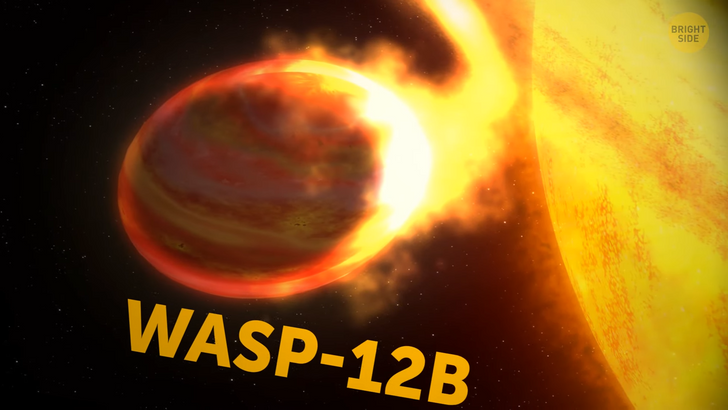
Discovered in 2017, KELT-9B is one of the hottest exoplanets we know of. The temperatures there can reach 7,800ºF!
For comparison, the temperatures at the surface of the Sun reach 10,000˚F. The planet is probably so insanely hot because it orbits extremely close to its star, KELT-9, which is way hotter and bigger than our Sun. Experts believe that the giant star might one day evaporate the entire planet.











